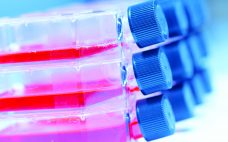Monoclonal antibodies (MAbs) have radically transformed the treatment of many chronic diseases, mainly in the fields of oncology and autoimmunity. The overwhelming majority of therapeutic MAbs are manufactured from recombinant Chinese hamster ovary (CHO) cell lines. The original CHO cell line was isolated in the 1950s, and since the early 1980s, it has become the workhorse of the biopharmaceutical industry. The CHO-DG44 strain was generated after several rounds of mutagenesis that deleted both copies of dihydrofolate reductase (dhfr) genes by…
Author Archives: Graziella Piras
Achieving Consistent Performance by Managing Raw Material Variability Through Predictive Modeling
The past 30 years have brought significant progress in the design and manufacture of cell culture media as well as in the types of components used. With these advances, the biopharmaceutical industry improved its processes — from producing just a few milligrams of product per liter of culture to ≥10 g/L. Since the early days of microbiology, peptones have been used widely as a basic ingredient of microbial media. In the 1990s, peptones were introduced as a substitute for serum…
Differential Cell Culture Media for Single-Cell Cloning
Recombinant therapeutic protein production using cell culture systems is a US$70 billion market. Most biotherapeutic proteins, including monoclonal antibodies (MAbs), are produced in Chinese hamster ovary (CHO) cells, which can generate the posttranslational modifications required for full biological function. Single-cell cloning is an important step in generating homogenous recombinant protein-producing mammalian cell lines. Recent advances in media development technologies have enabled limiting dilution cloning (LDC) and protein production in a serum-free environment to meet regulatory requirements. LDC…


